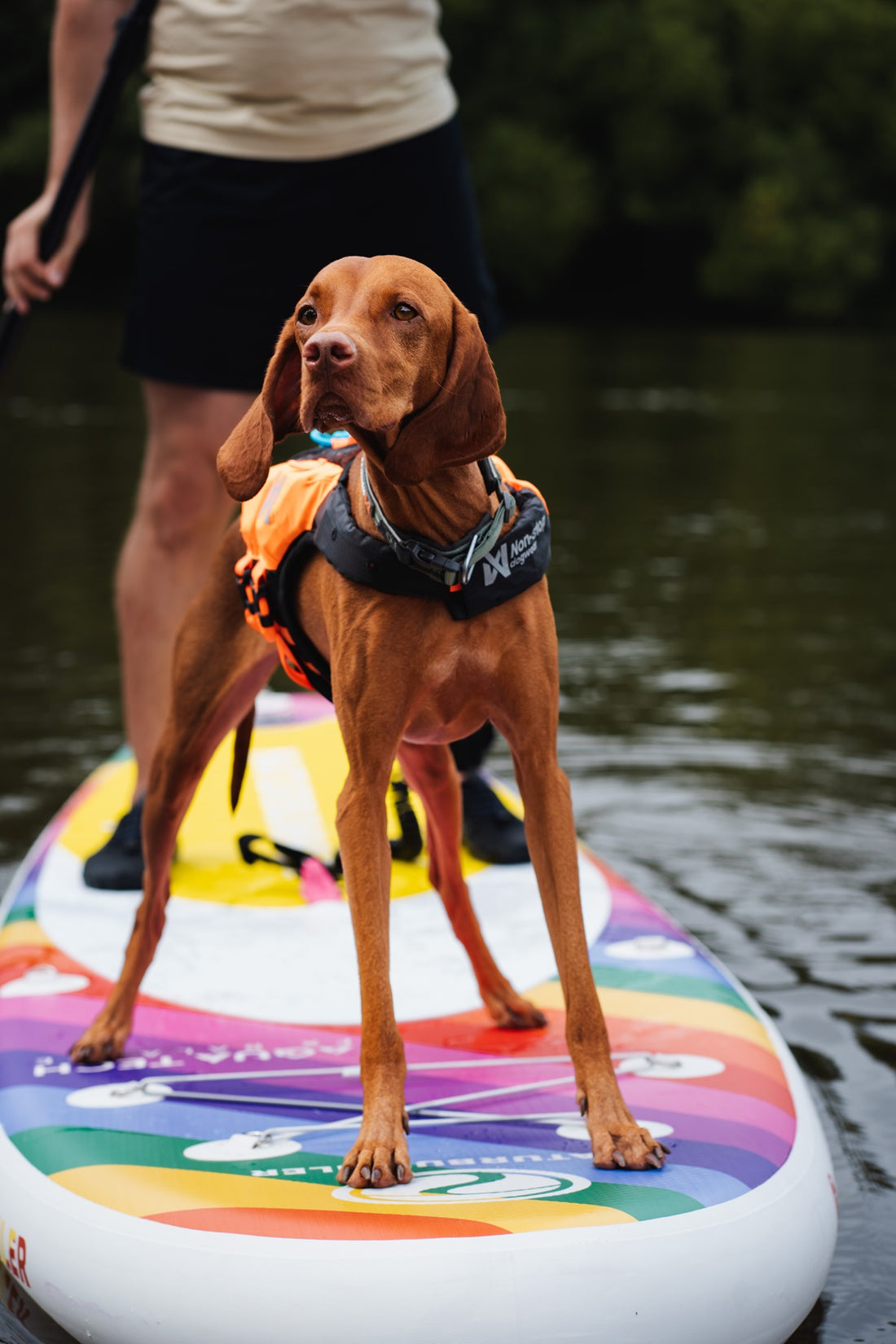
Paws on paddles - Week 4
Share
Last week, we introduced our dogs to paddleboarding, and this week, we're focusing on ensuring their safety both in the water and along the shoreline.
Diving into safety
To avoid accidents and negative experiences when paddle boarding with your dog, we recommend you to always keep safety in mind.
We have set up a list of important things to pay attention to when paddle boarding with your dog:
- Safety equipment: Even though paddle boards are solid, accidents can happen, either by the board deflating or even flipping over. Be particularly cautious of these risks when paddling in open waters far from the shore. Both you and your dog should always wear a life jacket when being in or by the water.
- Avoid jumping off the board: When your paddle board is on the water, it does not provide a solid base for your dog to jump from, like for example a dock would. The board will move as they take off, which can cause hyperextension and, in turn, lead to injuries. Help your dog dismount the paddle board as gently as possible when the paddle board is in open water, for example, by holding the handle on their life jacket.
- Pay attention to currents and weather: Have you tried paddle boarding against strong winds or currents? It is really hard, so always pay attention to your surroundings to make sure you get back safely. If your dog is swimming next to the paddle board, keep an eye on them at all times.
- Water temperature: Your dog’s body temperature can drop quickly when they are wet. If your dog has been swimming, make sure to keep a close eye on them. If they start to shiver or show signs of discomfort, bring them to shore and move around together to warm up. You can also put on a dog jacket to help warm them up.
- Boats and jet skis: It can be hard seeing a paddle board and a dog in the water, especially when coming in high speeds. Keep an eye out for boats and jet skis, make yourself visible by wearing bright colors and stay well away from boats and jet skis to prevent accidents.
- Fatigue or distress: Always listen to your dog, and take a break if they seem tired, especially if they are swimming. Swimming is an intensive workout, and even experienced swimmers can tire quickly. Watch out for signs of fatigue, such as your dog struggling to keep their body above water. In distress, a dog will often drop their back end causing them to quickly disappear under the surface of the water. A life jacket will help keep your dog afloat and reduce the risk of drowning.
- Saltwater: Drinking large amounts of salt water can be dangerous for dogs as it can lead to dehydration, vomiting, and diarrhea. It is important to provide fresh water for your dog to drink and monitor their intake while swimming in salt water. Additionally, exposure to high levels of salt water over a prolonged period can cause skin irritation and dryness.
- Blue-green algae: In some lakes you find blue-green algae, which can be toxic to dogs. Exposure to these toxins can be fatal for both dogs and humans. Be aware that the algae is not always visible. Avoid swimming in water with visible algae blooms (blue-green foam, flakes, bundles or dots) or if you observe dead fish. Some countries have maps that provide information about areas with algae. If your dog swallows or is in contact with water containing blue-green algae, contact a veterinarian immediately.
- Sand: Be mindful of your dog ingesting sand, either from toys or licking their paws. Eating sand can cause digestive issues and even blockages in the intestines, which can be a severe health concern.
- Cuts or burns: Seashells, sharps rocks and glass can cause deep cuts on your dog’s paws. Look out for sharp objects and try avoiding them when taking your dog to the beach. On warm days, there is also a risk of burns or blisters from walking on sand, asphalt or other warm surfaces. Protective dog booties can be worn preventively.
- Rinse: You are advised to rinse your dog in clean, fresh water after paddle boarding, especially if you have been in salt water. This helps prevent swimmer's itch. Drying them properly is also beneficial.
Have fun, stay safe!
Taking care of your dog’s life jacket
If your dog’s life jacket is exposed to sand, gravel or saltwater we recommend you rinse it after use and hang it in a dry room.
We do not recommend drying your dog’s gear in direct sunlight.
This will prolong the lifetime of your equipment.
Next week we will address frequently asked questions and troubleshooting.





